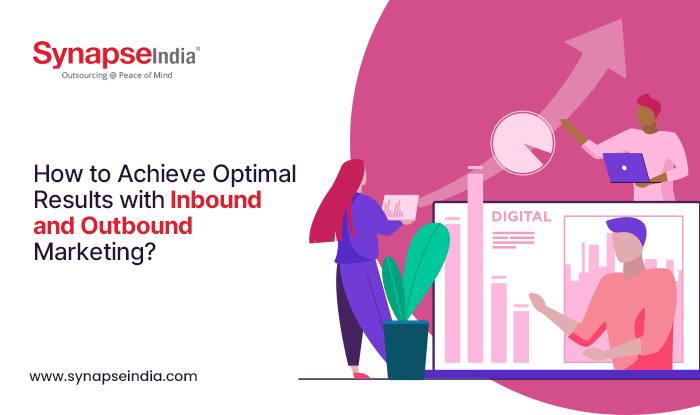 09 Jul 2024
09 Jul 2024
In the ever-evolving landscape of digital marketing, businesses are constantly seeking effective strategies to reach and engage their target audience. Two prominent approaches that have gained widespread adoption are inbound and outbound marketing. While inbound marketing focuses on attracting prospects through valuable content and experiences, outbound marketing involves reaching out to potential customers through traditional advertising channels. Both methods have their strengths and weaknesses, but when used together strategically, they can deliver optimal results for businesses. In this comprehensive guide, we'll explore how to leverage the power of inbound and outbound marketing to achieve maximum effectiveness and drive sustainable growth.
Inbound marketing is a customer-centric approach that focuses on attracting prospects through valuable content, engagement, and personalized experiences. Instead of interrupting audiences with intrusive advertisements, inbound marketing seeks to provide solutions to their problems and build meaningful relationships over time.

Producing high-quality, relevant content that addresses the needs and interests of your target audience is the cornerstone of inbound marketing. This includes blog posts, articles, videos, infographics, and more.
Optimizing your content for search engines ensures that it ranks prominently in search results, making it easier for potential customers to discover your brand organically.
Leveraging social media platforms to connect with your audience, share valuable content, and foster community engagement is essential for building brand awareness and driving traffic to your website.
Building and nurturing email lists allows you to stay in touch with prospects and customers, deliver personalized content, and drive conversions through targeted email campaigns.
Outbound marketing, also known as traditional marketing, involves reaching out to potential customers through proactive advertising and promotional efforts. This includes methods such as TV commercials, radio ads, print advertisements, cold calling, and direct mail.

Running targeted advertising campaigns across various channels, including TV, radio, print, and online platforms, is a common outbound marketing tactic to reach a broad audience.
Initiating direct contact with potential customers through phone calls, emails, or physical mailings allows businesses to deliver personalized messages and offers directly to their target audience.
Participating in industry events, trade shows, and conferences provides opportunities to showcase products or services, network with prospects, and generate leads through face-to-face interactions.
While inbound and outbound marketing are often viewed as distinct strategies, they can complement each other effectively when integrated strategically. By combining the strengths of both approaches, businesses can create a cohesive marketing strategy that maximizes reach, engagement, and conversion opportunities.
Integrating inbound and outbound marketing requires alignment of content and messaging across channels. Ensure that your brand's messaging remains consistent and coherent, whether it's delivered through blog posts, social media ads, email campaigns, or traditional advertising channels.
Utilize data and analytics to gain insights into the effectiveness of your marketing efforts across inbound and outbound channels. Track key metrics such as website traffic, conversion rates, email open rates, and campaign ROI to identify areas for optimization and improvement.
Tailor your marketing campaigns to meet the needs and preferences of individual customers throughout their journey. Use customer data and segmentation strategies to deliver personalized content and offers that resonate with specific audience segments, driving engagement and loyalty.
In today's competitive marketing landscape, businesses must leverage a combination of inbound and outbound marketing strategies to achieve optimal results. While inbound marketing focuses on attracting prospects through valuable content and experiences, outbound marketing involves proactive outreach to potential customers through traditional advertising channels. By integrating the strengths of both approaches and aligning content, messaging, and data-driven insights, businesses can create a cohesive marketing strategy that maximizes reach, engagement, and conversion opportunities. Embrace the power of inbound and outbound marketing to drive sustainable growth and achieve your business objectives in the digital age.

